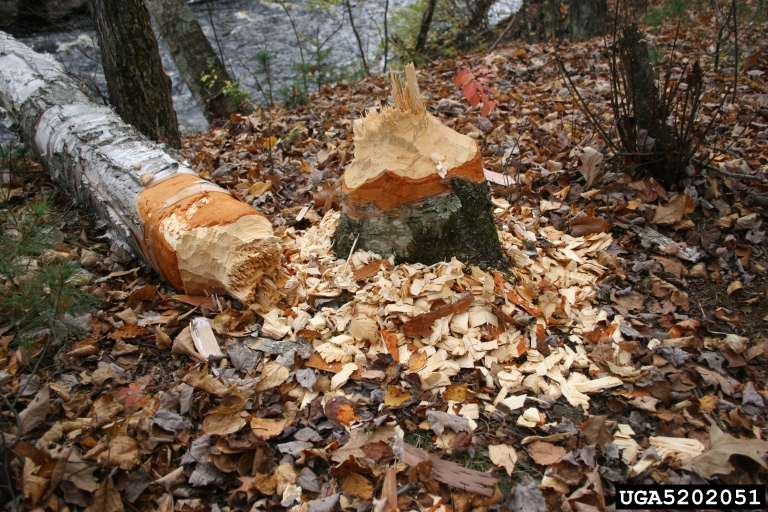 Legal Status of Wildlife - March 2, 2016 Jeff Schalau, Agent, Agriculture & Natural Resources University of Arizona Cooperative Extension, Yavapai County Many times, Cooperative Extension gets a call from a resident asking what can be done about a wild animal or bird that has become “a nuisance”. Two common calls are about great blue herons eating the koi fish in a water feature or a skunk or raccoon entering a home through a pet door to eat pet food. Other wildlife conflicts have been related to beaver, elk, deer, porcupine, wood rat, cottontail rabbit, javelina, coyote, and sapsuckers. Humans often are at odds with wildlife in both rural and urban areas. For this reason, federal and state governments have implemented strategies to promote long-term conservation of animals and their habitats. Some laws, like the Endangered Species Act, establish strategies to prevent individual species from becoming extinct. Arizona also regulates hunting and fishing to balance use with conservation of harvested species. When living in a rural area where wildlife is more prevalent and potentially damaging to orchards and gardens, it is important to understand what species are protected by the law. Most of our local birds are protected under the Migratory Bird Treaty Act (MBTA). The MBTA makes it unlawful to pursue, hunt, take, capture, kill, possess, sell, purchase, barter, import, export, or transport any migratory bird, or any part, nest, or egg of any such bird, unless authorized under a permit issued by the Secretary of the Interior. The MBTA protects over 800 species of birds nationally. A list of species protected under the MBTA can be found on the US Fish and Wildlife Service’s website (http://www.fws.gov/birds/) and includes raptors such as burrowing owls and peregrine falcons, as well as their nests. The only birds that are not protected in Arizona are rock doves (pigeons), English sparrows, and European starlings. A resident may take action against these species using legal means if they are causing damage to crops. The Arizona Game and Fish Department is responsible for the management of Arizona’s wildlife and does this in part by regulating hunting and fishing. They use current data on the health of wildlife populations to define the times (seasons) and methods of taking wildlife and possession and bag limits. A valid Arizona hunting or fishing license is required for taking wildlife on public and private land in Arizona. Licenses can be purchased at an Arizona Game and Fish Department Office or one of 300 license dealers in the state. If you are going to hunt, read the rules carefully and ask questions if you are not clear as to their requirements. Wildlife species that can be hunted with a permit include big game, small, game, and predators. Big game species include antelope, javelina, elk, Merriam’s turkey, desert bighorn sheep, mule deer, white tail deer, mountain lion, black bear, and bison. Small game include cottontail rabbits, tree squirrels, upland game birds (quails, chukar, grouse, and pheasants), and migratory game birds (ducks, geese, swan, sandhill cranes, coot, gallinule, common snipe, mourning and white-winged doves, and band-tailed pigeon). Predators include bobcat, coyote, foxes, and skunks. Furbearers are often trapped rather than hunted and include badger, beaver, muskrat, raccoon, otter, ringtail, and weasel. The only mammals that can be killed or harassed in Arizona without a permit are rock squirrels, gophers, and packrats. Some gardeners shoot first and ask questions later. This is not a good idea. In Arizona, firearms may only be discharged if more than one mile from any occupied structure. However, the law (ARS 13-3107) does not prevent a city, town or county from adopting an ordinance or rule restricting the discharge of a firearm. Many times, local regulations restrict discharging a firearm within one-fourth mile of an occupied structure without the consent of the owner or occupant of the structure. In Arizona, firearms are defined as any loaded or unloaded handgun, pistol, revolver, rifle, shotgun or other weapon that will expel, is designed to expel or may readily be converted to expel a projectile by the action of an explosive. Check your local city ordinances - some cities ban using slingshots, BB guns, air guns, or bow and arrow. The real purpose of this article was to keep garden and orchard enthusiasts out of trouble when trying to dissuade unwanted wildlife. You can’t just get out a bb gun (or a slingshot) and start firing. Visit the online edition (see URL below) for additional resources on wildlife legal status. Follow the Backyard Gardener on Twitter – use the link on the BYG website. If you have other gardening questions, call the Master Gardener help line in the Camp Verde office at 928-554-8992 or e-mail us at verdevalleymg@gmail.com and be sure to include your name, address and phone number. Find past Backyard Gardener columns or provide feedback at the Backyard Gardener web site: http://cals.arizona.edu/yavapai/anr/hort/byg/.  Additional Resources Legal Status of Wildlife University of Arizona Cooperative Extension extension.arizona.edu/sites/extension.arizona.edu/files/pubs/az1481j.pdf Arizona Game and Fish Department www.azgfd.com/ U.S. Fish and Wildlife Service www.fws.gov |